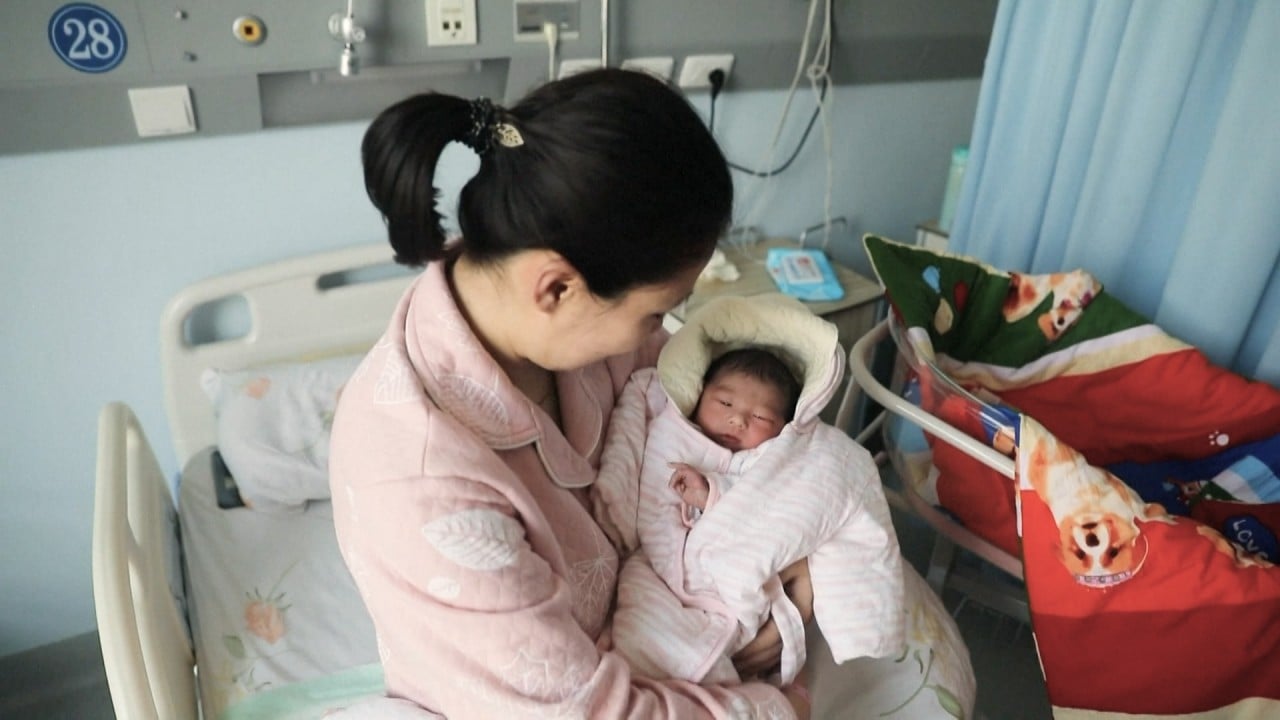
Coronavirus’ huge hidden cost: millions of unborn babies across the world
- There’s no denying that China, Taiwan, Hong Kong and South Korea have done an impressive job of keeping Covid-19 death tolls low
- But they, and others, are likely to have declining fertility rates, which will cost their economies dearly down the road
Covid-19 has killed over 380,000 people across the globe, including 100,000 in the United States. A less obvious implication is that the virus may take a heavy toll on new births.
There are historical lessons here. In the US, the Great Depression reduced the fertility rate to 2.17 children per woman in 1933 from 2.66 in 1928, while the Great Recession has contributed to a decline in the past decade the number of children per American woman sank to 1.71 in 2019, down from 2.12 in 2007.

01:31
China faces demographic challenge as birth rate drops despite government efforts
The impact of the coronavirus on births could have deep social and economic implications for decades. Coronavirus policies intended to save lives should be implemented in two directions: they should not just prevent deaths from Covid-19 but also encourage people to have children despite the coronavirus-induced recession.
If the global fertility rate were to drop by 0.1 next year due to Covid-19 – a very conservative estimate – the world would have six million fewer babies, including 880,000 fewer in China and 222,000 fewer in the US.
Greying China cannot overtake the US economy. Period
If the fertility rate were to drop by 0.2 in 2021, 12 million babies would not be born because of the pandemic. That’s about half the total population of Australia.
Assuming that Covid-19 eventually kills around 200,000 people in the US – and that the victims would, by my estimate, on average have had another 14.4 years to live if they had not caught the virus – the total loss would be 2.9 million years. But 222,000 fewer births, in a country with an average life expectancy of 78.6 years, would translate into a loss of 17.4 million years.
For China, the impact of the human cost on the economy could be even more serious, even as Beijing pats itself on the back for bringing the outbreak under control with lockdown measures.
This could be partly explained by how these populations respect authority, making it that much easier to impose lockdowns and other containment measures. However, this blessing is a curse when it comes to encouraging births because the bigger the government, the smaller the family seems to be.
East Asian populations have the lowest fertility rates in the world, and they might decline more rapidly during the pandemic, so the loss of life might be greater. The US has a strong civil society and a higher fertility rate, and is hence more innovative.
At the end of the day, the coronavirus has exposed the fragility of human life across different cultures. While the West cannot emulate the success of the East’s virus containment measures, the East may find it harder to reverse the hidden costs of fewer births. However, different trajectories might still end up at the same point.
Yi Fuxian is a senior scientist at the University of Wisconsin-Madison and author of Big Country with an Empty Nest

